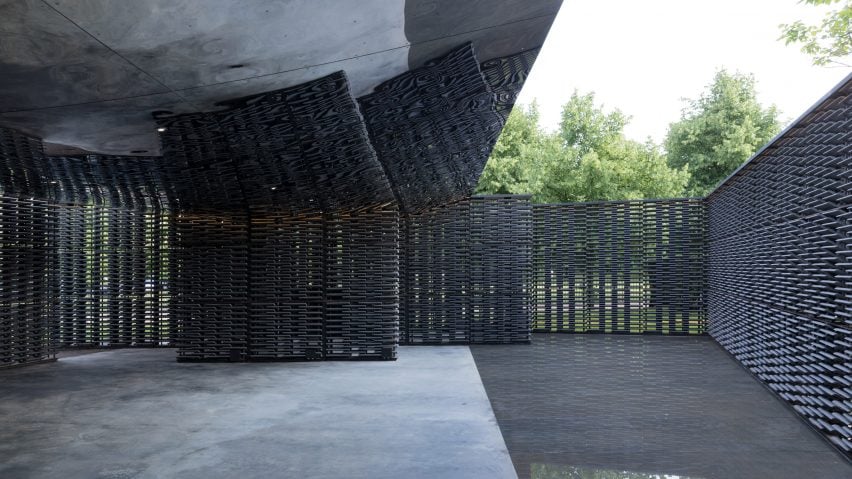
Frida Escobedo builds Serpentine Pavilion featuring "woven tapestry" of concrete tiles
Mexican architect Frida Escobedo has completed this year's Serpentine Pavilion, a secluded courtyard framed by decorative, latticed walls.
Located outside the Serpentine Gallery in Kensington Gardens, London, Escobedo's pavilion features walls of concrete roofing tiles, a curving mirrored ceiling and a shallow, triangular pool of water.
The aim was to reference the courtyards that are a common feature in Mexican residential architecture, and to frame these with a reinterpretation of the "celosia" – a breeze-block wall that allows light and the breeze to filter through.
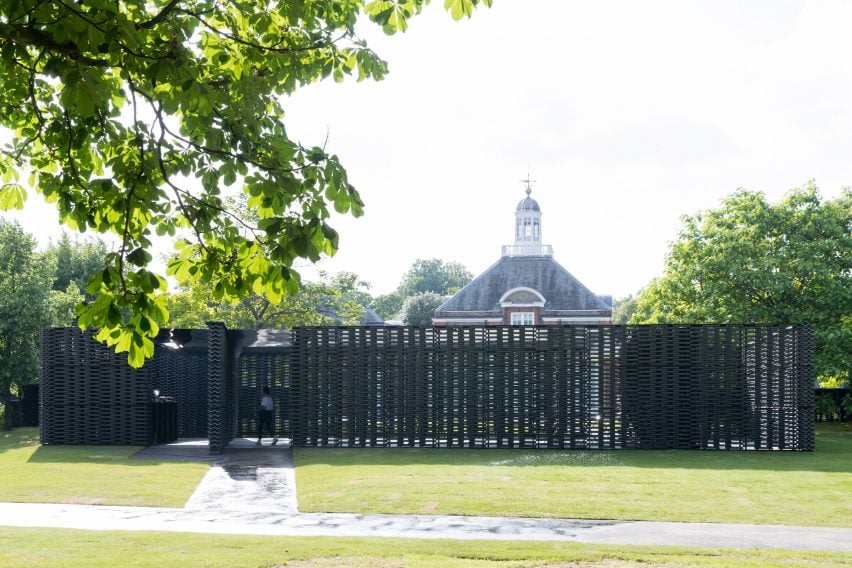
Here, the celosia is recreated using concrete roof tiles manufactured in the UK. These undulating tiles are stacked up to create a complex alternating pattern, which provides decorative details at the corners.
They are mirrored by both the pool of water and the ceiling, creating a series of distorted reflections.
"The materials are quite simple," explained Escobedo during the press launch today, 11 June 2018.
"This is something that we usually do – we know how to work with simple materials and simple geometries but in complex ways," she said. "These concrete tiles are woven, like a tapestry, in a very specific pattern that becomes becomes transparent when the light is behind the wall."
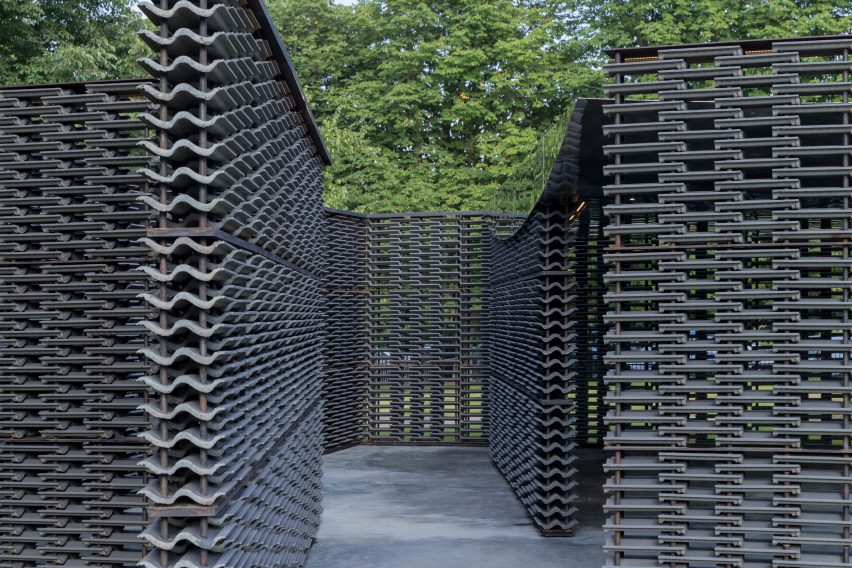
In plan, the pavilion comprises two overlapping rectangles. One of these runs parallel with the Serpentine Gallery behind, and the other runs parallel to the Prime Meridian, the longitudal axis established at nearby Greenwich, which is used to measure time all over the world.
Escobedo's intention was to create something that would allow the pavilion to not only be site-specific in Kensington Gardens, but also after the summer, when it will be moved to a new, as-yet-unknown location.
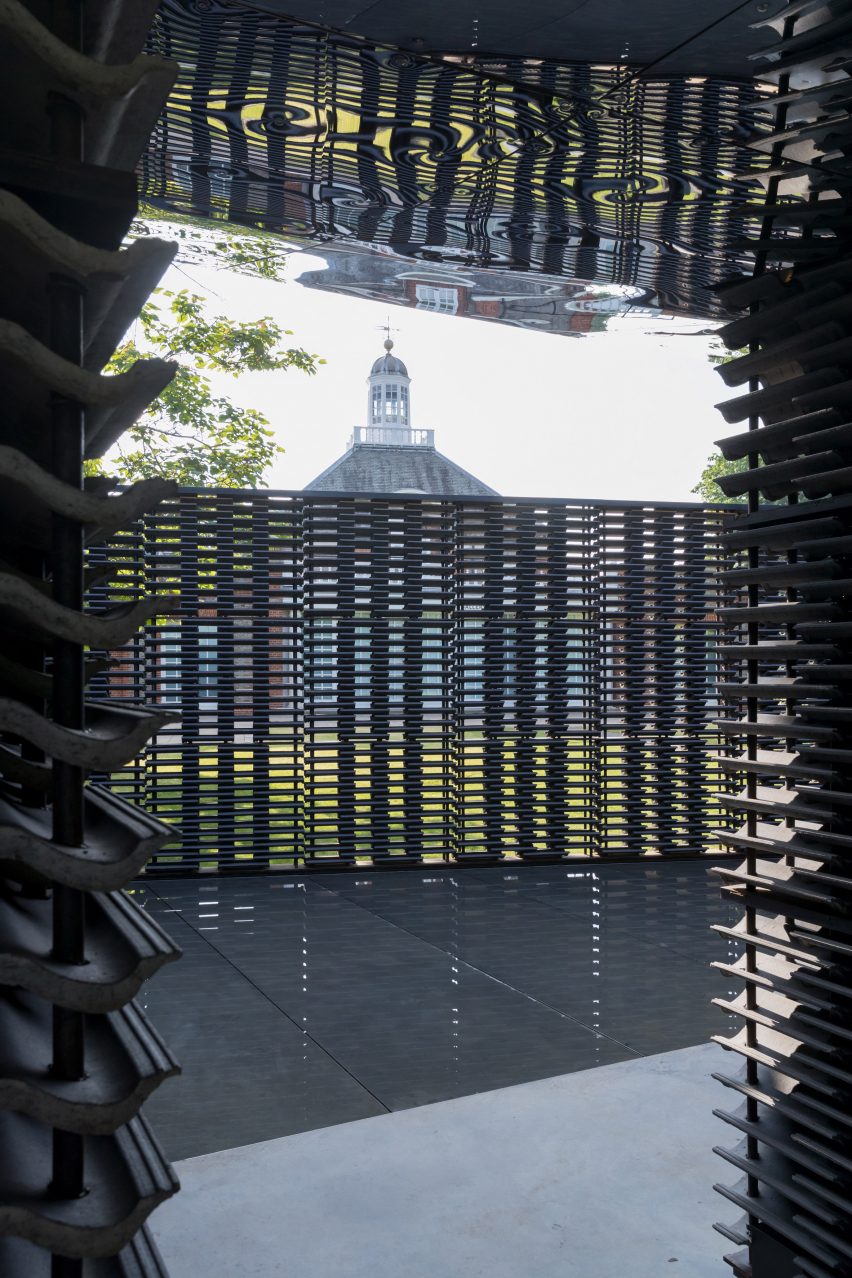
"A pavilion, especially one like, has a very dual nature," said Escobedo. "On one hand it is very site-specific to Hyde Park and the gallery. But it only has a temporality of four months here, then it becomes permanent structure in a new home."
"We had to deal with this – knowing where the pavilion was going to be, but not knowing where it was going to go next," she continued. "How to resolve this contradiction? Anchor it to space, but also make it spaceless."
"It's meant to be a compass that allows you to locate yourself, not just geographically, but to give you larger understanding of what social space and can be."
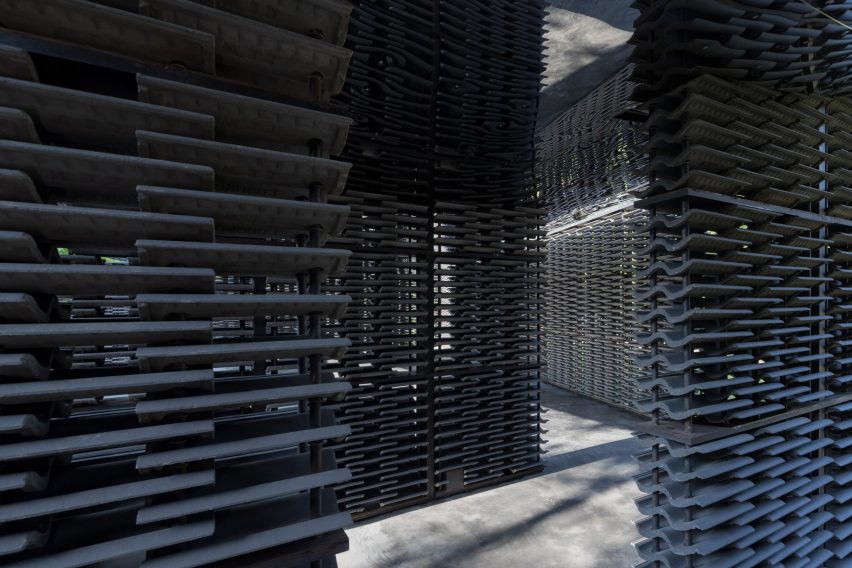
Escobedo's previous projects include a gallery in the former home of painter David Alfaro Siqueiros and an Aztec-inspired installation at the V&A.
She becomes the 18th architect commissioned to design the Serpentine Pavilion in London. She is younger than any of her predecessors, which include Peter Zumthor and Bjarke Ingels, and is the first solo woman to lead the project since the inaugural pavilion designed by Zaha Hadid in 2000.
Serpentine Galleries directors Hans Ulrich Obrist and Yana Peel describe this year's pavilion as "architecture for everyone".
"In its beautiful harmony of Mexican and British influences, it promises to be a space of reflection and encounter," they said.
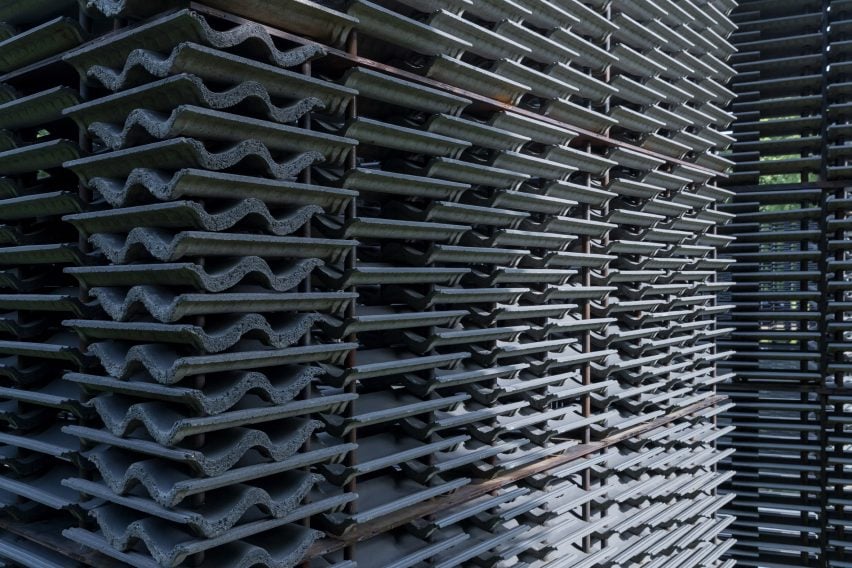
The pavilion will be open to the public from 15 June to 7 October 2018. It will contain a cafe, but also host a programme of events encompassing art, architecture, music, film and dance.
This year also saw the completion of the first Serpentine Pavilion built outside the UK. Opened last month, the Serpentine Pavilion Beijing is designed by Chinese architecture studio Jiakun Architects.
Photography is by Iwan Baan.
Project credits:
Client: Serpentine Gallery
Designers: Frida Escobedo and Taller de Arquitectura
Rendering: Atmósfera
Consultant: Stage One
Technical consultant: David Glover
Technical advisors: Aecom